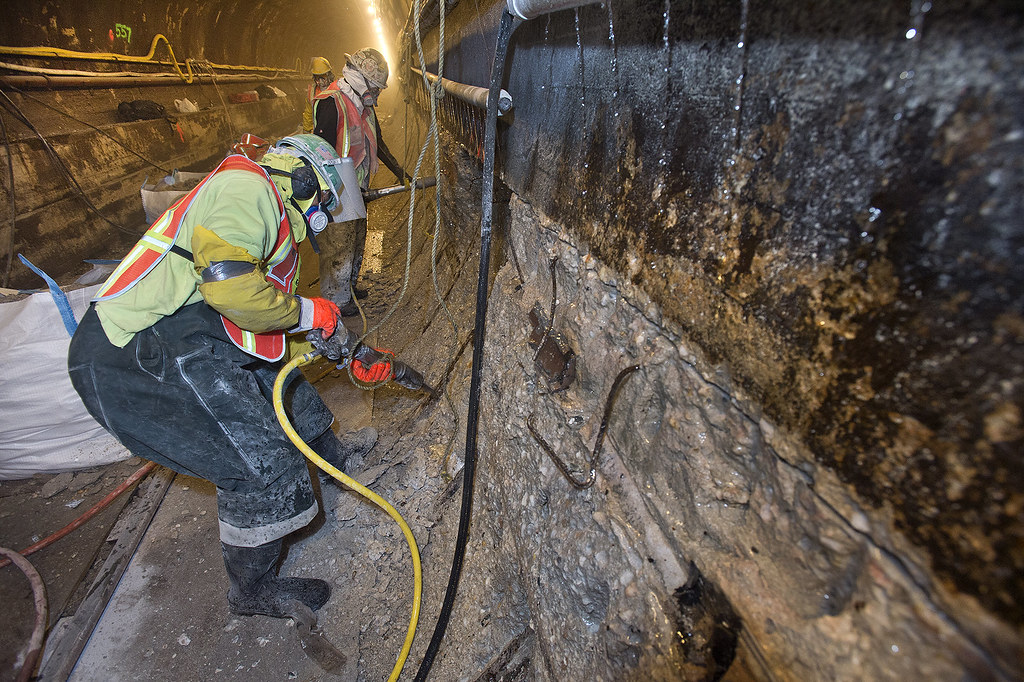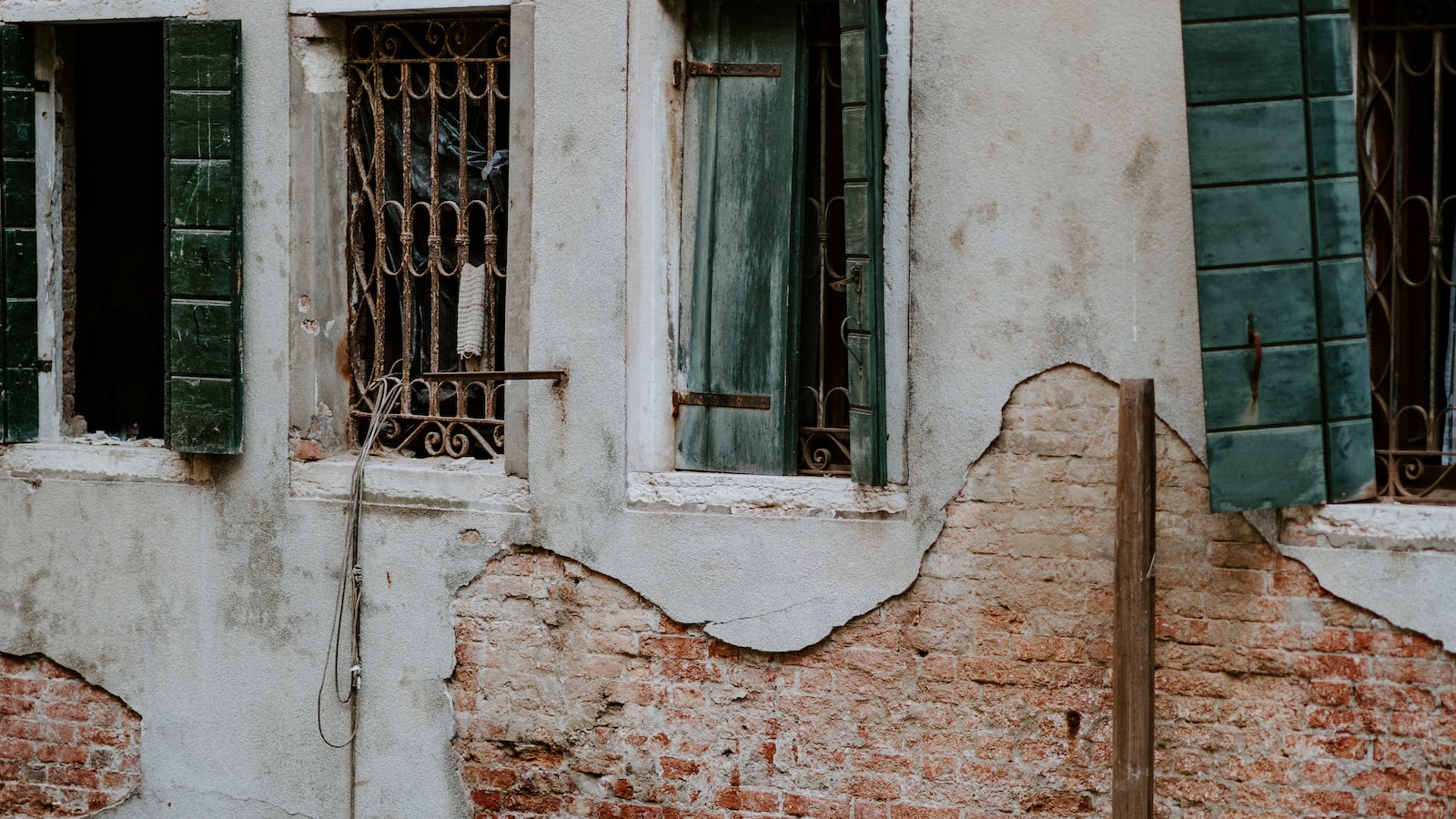Once upon a time, waterways flowed freely, weaving their way through lush landscapes, harmoniously connecting the world in a beautiful tapestry of life. However, the modern world brought with it an insidious problem – the degradation and pollution of these precious water arteries. It is a dire predicament that demands urgent attention, for our once vibrant and thriving waterways now suffer from the burden of neglect. But fear not, dear reader, for there is hope on the horizon – a glimmering beacon of possibility shines through the darkness. Welcome to a tale of revival, where we embark on a quest to unearth the perfect pipe recovery method, a path that leads us towards breathing life back into our beloved waterways, nurturing them to their former glory. In this article, we delve into the realm of innovation and engineering, exploring the neutral tones of different strategies, to revive and restore our waterways, advocating for a harmonious future where the gentle rush of water harmonizes with the echoes of nature once again.

Reviving Waterways: Unearthing the Perfect Pipe Recovery Method
Waterways play a vital role in our ecosystem, providing a home for diverse species and acting as a source of irrigation, transportation, and recreation. However, over the years, these water channels have suffered from neglect, leading to the deterioration of their pipes and infrastructure. To bring them back to life, it is crucial to unearth the perfect pipe recovery method.
One method that has proven to be highly effective is the trenchless pipe rehabilitation technique. This innovative approach eliminates the need for extensive digging, minimizing environmental and surrounding communities’ disruption. With trenchless technology, specialized equipment is used to insert a new pipe into the existing damaged one, creating a seamless and structurally sound pipeline. This method saves time and money and reduces the carbon footprint associated with traditional excavation methods. The benefits of trenchless pipeline rehabilitation are manifold, making it a preferred choice for reviving waterways worldwide.
To better understand the various pipe recovery methods available, let’s take a closer look at some of the options:
- Cured-in-Place Pipe (CIPP): CIPP involves the insertion of a flexible liner coated with a resin that hardens to form a durable pipe within the existing one. This technique is particularly effective for repairing small to medium-sized waterways.
- Pipe Bursting: This method is commonly used for larger diameter pipes that have experienced significant damage. It involves fracturing the old pipe while simultaneously pulling in a new, stronger pipe. Pipe bursting is a cost-effective solution for rehabilitating larger waterways.
- Spiral Wound Pipe (SWP): SWP is a technique that utilizes a helical strip wound around a mandrel to create a new pipe. This method is ideal for larger pipes and can be fabricated on-site, reducing transportation costs.
Reviving waterways through the implementation of the perfect pipe recovery method is crucial for the preservation and restoration of our planet’s precious ecosystems. With advancements in technology, these methods provide efficient and sustainable solutions to ensure the longevity and health of our water channels.

I. Evaluating the Condition of Waterways: A Comprehensive Approach for Effective Restoration
When it comes to the restoration of our waterways, a comprehensive approach is crucial for achieving effective results. Unearthing the perfect pipe recovery method is the key to reviving and revitalizing these natural wonders. With environmental concerns and sustainability at the forefront of global discussions, it is imperative to evaluate the condition of waterways and implement innovative solutions.
One effective strategy is the utilization of trenchless technology, a method that eliminates the need for extensive excavation and costly disruption. This approach minimizes environmental impact by reducing soil disturbance and preserving native habitats. By employing trenchless technology, we can swiftly repair damaged pipes without compromising the integrity of surrounding ecosystems.
<h3>Benefits of Trenchless Technology in Waterway Restoration:</h3>
<ul>
<li><strong>Minimal Environmental Disruption:</strong> Trenchless technology reduces the disturbance of delicate aquatic ecosystems, safeguarding the biodiversity of waterways.</li>
<li><strong>Cost-Effective Solution:</strong> By eliminating the need for extensive digging and restoration, trenchless technology offers a cost-efficient approach to waterway restoration projects.</li>
<li><strong>Improved Project Efficiency:</strong> With reduced excavation and construction time, projects utilizing trenchless technology are completed much faster, minimizing any inconvenience or disruption caused to communities and waterway users.</li>
</ul>
<h3>Comparing Trenchless Technology Methods:</h3>
<table class="wp-block-table">
<thead>
<tr>
<th>Method</th>
<th>Advantages</th>
<th>Disadvantages</th>
</tr>
</thead>
<tbody>
<tr>
<td>Slip Lining</td>
<td>Quick installation, cost-effective.</td>
<td>Reduced pipe diameter, limited material options.</td>
</tr>
<tr>
<td>Horizontal Directional Drilling (HDD)</td>
<td>No excavation required, suitable for long distances.</td>
<td>Higher costs, limited accessibility in certain areas.</td>
</tr>
<tr>
<td>Pipe Bursting</td>
<td>Efficient replacement technique, suitable for old pipes.</td>
<td>Requires equipment and specialized training.</td>
</tr>
</tbody>
</table>
II. Uncovering Innovative Techniques: Exploring New Methods to Rehabilitate Damaged Water Pipes
Reviving Waterways: Unearthing the Perfect Pipe Recovery Method
As our cities continue to expand, the pressing issue of aging water infrastructure becomes more apparent. Damaged water pipes can disrupt the daily lives of countless individuals, causing inconvenience, health risks, and economic losses. In the quest to address this challenge, water utility companies and researchers alike are delving into innovative techniques to rehabilitate damaged water pipes.
The exploration of new methods has paved the way for groundbreaking advancements in pipe recovery. One such technique gaining traction is trenchless pipe rehabilitation, a non-destructive approach that eliminates the need for extensive excavation. By employing cutting-edge technologies, such as cured-in-place pipe (CIPP) lining or pipe bursting, utilities can repair or replace damaged pipes with minimal disruption to surrounding infrastructure.
Advantages of this emerging technique are vast. Not only does it reduce costs associated with traditional pipe replacement, but it also minimizes the inconveniences caused to residents, businesses, and traffic during construction. With trenchless rehabilitation, the service life of water pipes can be significantly extended, ensuring a more reliable and sustainable water supply for the communities we serve.
Exploring the Diverse Methods of Trenchless Pipe Rehabilitation:
- Cured-In-Place Pipe (CIPP) Lining: Using resin-coated liners, this method involves inserting a flexible tube inside the damaged pipe, and then curing it in place to form a new durable pipe within the old one. CIPP lining is ideal for rehabilitating pipes affected by corrosion, cracks, or leaks.
- Pipe Bursting: This technique involves fracturing the old pipe while simultaneously inserting a new pipe of the same or wider diameter. As the new pipe is pushed through, the old pipe disintegrates, leaving behind an efficient, fully functional pipeline. Pipe bursting is commonly used for heavily damaged or undersized water pipes.
- Slip Lining: Here, a slightly smaller pipe is inserted into the damaged pipe, effectively creating a new pipe within the existing one. Slip lining works best for pipes with minor defects or for extending the service life of structures with limited access.
As the demand for water infrastructure rehabilitation continues to grow, so does the need for innovative solutions. By embracing trenchless pipe rehabilitation techniques, we can ensure efficient and sustainable repairs, revitalizing our waterways for generations to come.

III. Prioritizing Sustainable Solutions: Recommendations for Environmentally Friendly Pipe Recovery
In order to revive waterways and ensure their longevity, it is crucial to prioritize sustainable solutions for the recovery of pipes. This post will provide recommendations for environmentally friendly pipe recovery methods that can help protect natural resources and promote a healthier ecosystem.
1. Invest in trenchless technology: Trenchless pipe recovery methods such as pipe bursting and pipe lining offer significant advantages over traditional excavation techniques. These methods minimize disturbance to the surrounding environment, reduce carbon emissions, and require less time and resources for completion. By embracing trenchless technology, we can reduce the ecological impact associated with pipe recovery.
2. Promote pipe recycling: Instead of sending old pipes to landfills, recycling should be emphasized as a sustainable option. Establishing partnerships with recycling facilities and encouraging the use of recycled materials in pipe manufacturing can help conserve resources and minimize waste. Additionally, educating the public about the importance of pipe recycling can foster a culture of environmental responsibility.
| Method | Advantages |
|---|---|
| Trenchless Technology | Reduced environmental disturbance, lower carbon emissions, and efficient completion |
| Pipe Recycling | Conservation of resources, waste reduction, and promotion of environmental responsibility |
By implementing these recommendations and incorporating sustainable practices into pipe recovery processes, we can contribute to the restoration and preservation of our waterways. Together, let’s unearth the perfect pipe recovery method that harmonizes with nature and safeguards our precious ecosystems.

IV. Collaborative Efforts: Incorporating Stakeholder Engagement for Successful Waterway Rehabilitation
In order to revive waterways and ensure effective rehabilitation, it is imperative to incorporate stakeholder engagement. This collaborative approach brings together diverse perspectives and expertise to create a comprehensive strategy that addresses the challenges faced by our waterway systems. By involving stakeholders such as environmental agencies, local communities, and engineering firms, we can pave the way for successful projects that not only restore waterways but also promote sustainable development.
One key aspect of stakeholder engagement is the identification of shared goals and objectives. This involves conducting thorough consultations and dialogues with all relevant parties to understand their priorities and concerns. By actively listening to these stakeholders, we can gain valuable insights, identify potential conflicts, and work towards finding mutually beneficial solutions.
- Engage in regular meetings and workshops to foster collaboration and exchange knowledge.
- Encourage open communication channels to ensure all stakeholders are heard and involved in decision-making processes.
- Establish partnerships with local businesses and organizations to leverage resources and expertise.
- Implement effective monitoring systems to track progress and address any unforeseen challenges.
Furthermore, stakeholder engagement also involves raising awareness and educating the public about the importance of waterway rehabilitation. By creating a collective sense of responsibility, we can mobilize support and encourage individuals to actively participate in initiatives that promote the preservation and revival of our waterways.
| Benefits of Stakeholder Engagement |
|---|
| 1. Improved decision-making through diverse input and expertise. |
| 2. Enhanced project transparency and credibility. |
| 3. Increased stakeholder ownership and commitment. |
| 4. Better understanding of local needs and environmental considerations. |
As we conclude this journey into the depths of waterway restoration, our hearts are buoyed by the potential for a brighter future. The quest to unearth the perfect pipe recovery method has unveiled a world of possibilities, awakening within us a newfound appreciation for the resilience of our waterways.
Through tireless efforts and ingenious innovations, we have witnessed the revival of once-forgotten streams and rivers. The humbling collaboration between experts, engineers, and nature itself has breathed life back into these precious lifelines, reminding us of the intricate balance that sustains our fragile ecosystem.
With this newfound knowledge, we stand on the precipice of a revolution in waterway rehabilitation. Armed with cutting-edge technologies and ancient wisdom, we can now restore and preserve these flowing arteries of life with unprecedented accuracy and precision. Gone are the days of merely mending our waterways; the time has come to revive them, to give them back their former glory.
As we reflect on the trials and triumphs of this arduous journey, we recognize both the sacrifices made and the advancements achieved. The intricate dance of dredging, redirecting, and renewing has taught us valuable lessons about patience and perseverance. In the face of daunting challenges, we have witnessed firsthand the transformative power of unity and collective action.
Yet, we must also tread with humility, never forgetting that our actions have consequences. The delicate tapestry of interconnected ecosystems requires careful stewardship to thrive. It is our duty to ensure that these restored waterways are not merely a fleeting respite, but a legacy to be cherished by generations to come.
As the curtain falls on this exploration into the perfect pipe recovery method, we leave behind the blueprint for a brighter future. Let us carry this torch of knowledge and innovation, striding forward with respect for the rivers and streams that intertwine our world. Together, we can revive the waterways, breathing life into their veins and transforming them into thriving ecosystems once more. The journey is far from over, but the path we have forged illuminates a world where the ebb and flow of water harmonize with the rhythm of life itself.


2 comments